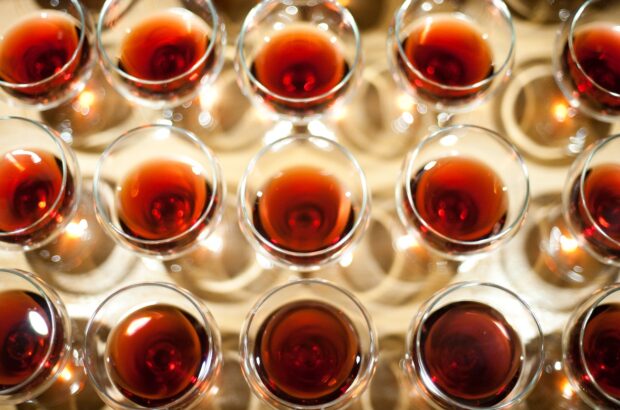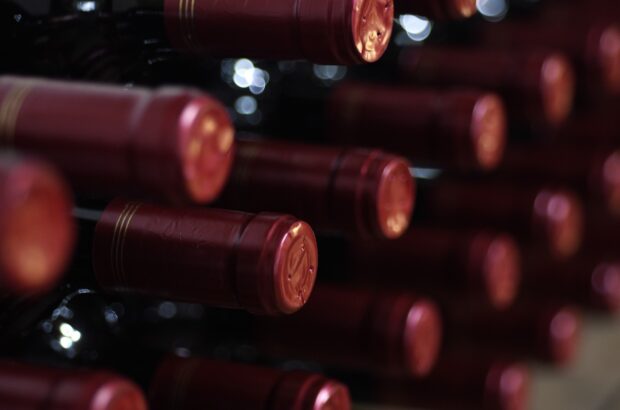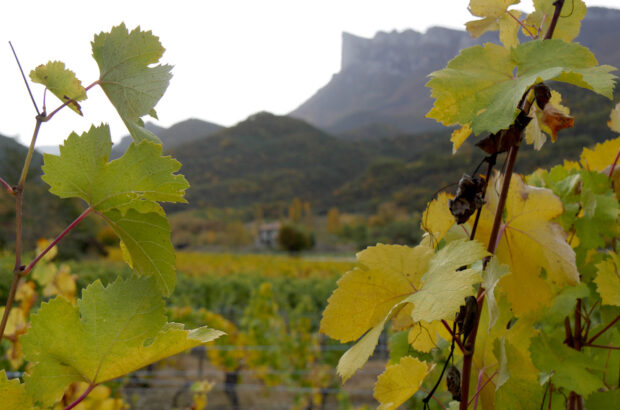The tiny Italian region of Valle d’Aosta boasts famous Alpine peaks and a cultural duality that charmingly fuses food and wine with Italian and French sensibilities.
In the Graian Alps, bordering France and Switzerland, Italy’s smallest and least populous region showcases a fascinating wine world and life-size experiences in the country’s premier Alpine playground.
Almost too mountainous for agriculture – and by far the smallest wine production of any Italian region – Valle d’Aosta makes up for it with an astonishing array of indigenous grapes grown there for centuries.
Despite its geographic location, wine lovers are finding treasures in Valle d’Aosta when, just a decade ago, bottlings of these pure varieties were almost non-existent.
The heart of Valle d’Aosta is centered around a massive glacial valley, running east to west. Carved by the Dora Baltea River, the valley lies in the shadow of some of Europe’s highest peaks, including Mont Blanc and the Matterhorn (Monte Cervino).
Unsurprisingly, it’s a mecca for outdoor sports enthusiasts: in the winter, experience the thrill of skiing at popular ski resorts such as Courmayeur, Pila, Chamois and Breuil-Cervinia.
During the milder months between May and October, plan for a five-day wine trip and set aside time to hike to clear blue lakes, through waterfall-strewn landscapes, amid endless majestic views. Tour du Mont Blanc is a bucket-list item for serious hikers.
Also fascinating is Aosta’s rich history and large number of castles which add to the picturesque fairytale setting. The entire region is visually and culturally alluring – a blend of Italian and French language, gastronomy and sensibilities creating its own distinctive character.
Origins and the French Connection
After the fall of the Roman Empire, Aosta became part of the Kingdom of Burgundy and was then ruled by the royal family of Italy – the House of Savoy – until the Italian unification in 1861.
Although never officially part of France, given its proximity and history the region has strong connections with its neighbour. The area is bilingual (Italian and French); the locals speak a Franco-Provençal dialect called Valdôtain or Patois. More often than not, you’ll find place names written in French.
It’s unclear whether Chardonnay, Pinot Noir and Gamay first appeared in Valle d’Aosta during the period of Burgundian control, but today Valle d’Aosta produces fine examples from these varieties.
The modern viticultural revival began after World War II, when a Swiss-born Catholic priest named Joseph Vaudan encouraged farmers to grow Burgundian grapes. But soon, he began championing native varieties, realising that they were what truly set Valle d’Aosta apart.
Exploring Valle d’Aosta wines
Despite its Alpine location, Valle d’Aosta’s continental climate provides relatively warm, sunny days for grape growing. Vines are planted on terraced slopes above the valley, favouring the valley’s sun-facing (Adret) side.
Pergolas are low to the ground to expose the grapes to the daytime heat retained in the rocky soils composed largely of granite and schist. This aids ripening, ensuring the grapes reach optimum sugar and acidity levels before harvest.
Valle d’Aosta’s viticultural areas extend from the Donnas, near Piedmont’s border, to Morgex, situated an hour away from France’s town of Chamonix. Along this route is the city of Aosta, a solid home base from which to explore the wine region, preferably at least two days each in both the east and west directions.
Wine lovers will discover that the dedication and pride that goes into making Valdaostan wines give this tiny region an exceptional level of authenticity. The most familiar indigenous Italian wines are the high-altitude Nebbiolo wines (locally called Picotendro or Picotener), primarily produced by the cooperative Caves de Donnas. Moving westward, practise the French pronunciation while discovering Nus Malvoisie (Pinot Grigio) from the commune of Nus; Petit Rouge-dominant wines of Chambave and Torrette; the dark and savoury Fumin; the rare, versatile and ruby-coloured Cornalin; the crisp white wines of Petite Arvine; and bright and mineral Prié Blanc from Morgex and La Salle.
The small wine estates are family operated, and nearly 70% of growers own 0.2 hectares of vines or less and/or have multiple parcels strewn throughout the valley.
Ermes Pavese, one of the better-known family-run domaines of the upper valley, produces wines from the elusive and indigenous Prié Blanc grape that only grows in the Morgex and La Salle areas. Pavese’s vineyards total seven hectares scattered among 100 parcels. Together with Ermes’ daughter, Ninive and son, Nathan, the family produces 12 different labels totalling 40,000 bottles. Their wines capture Alpine purity that are invitingly fresh with crisp acidity and minerality. Nathan also makes crisps (potato chips), which appropriately rounds out a memorable tasting in their cosy cellar.

Ermes Pavese winery. Credit: Craig Finetti
Cooperative Cave Mont Blanc makes excellent pre-phylloxera sparkling wines from Prié Blanc. With vineyards at altitudes between 900 and 1,200 metres, the wines of Cave Mont Blanc are brisk, mineral, elegant – and definitely worth arranging a visit for.
The Cave is also rediscovering ancient and almost extinct native grape varieties, such as Roussin de Morgex. It was Italian wine expert Ian D’Agata who initially encouraged the Cave to embark on the project over a decade ago. Today, they produce a sparkling wine from a dedicated plot of Roussin de Morgex.
Another individual who has made efforts to produce wines from long-forgotten grape varieties is Michel Vallet of Feudo Di San Maurizio. Arrange a private tasting and tour of his vineyards to get up close to such rare varieties such as Vuillermin, Fumin, Mayolet and Cornalin. (Contact: ordini@feudodisanmaurizio.com)
Not too far away, in Saint-Pierre, Cantina Di Barrò is a family-run winery headed by Elvira Stefania. Di Barrò produces delicious and well-made red wines from Mayolet, Fumin, and Petit Rouge-driven Torrette, all in 100% stainless steel that result in extraordinarily pure expressions. New to their range is the riveting Blanc de Blanc Pas Dosé called ‘Mirliflor’ (in French meaning a young, elegant, proud man). It’s made from Chardonnay, Pinot Gris, Pinot Blanc and Petite Arvine aged for 60 months. There will only be 100 bottles available when it’s ready in 2023.
In the small hamlet of Chambave is La Crotta di Vegneron, a cooperative that partners with 70 growers to produce approximately 200,000 bottles. Among the many wines they produce with grapes from the surrounding communes of Chambave DOC and Nus DOC, try the Chambave Muscat, a stunning and versatile aromatic white wine. La Crotta’s 100% Fumin is also worth trying: an honest representation of the terroir, it is inky, smoky and dark with a delightful lift.
A trip to Aosta isn’t complete without seeking out Génépy, a legendary herbal liqueur made from the Alpine herb artemisia. Also try the local amari: Ottoz from Aosta produces both Génépy and an amaro called Ebo Lebo, meaning yarrow in Patois – an ingredient that ancient natives attributed to digestive qualities and strength.
A perfect day in Valle d’Aosta
Morning
Wake up to the bells of native dairy cows who produce the area’s famous Fontina di Alpeggio cheese, often served at breakfast with other local delights at Parfum du Sel, a family-owned bed & breakfast located in the small village of Jovençan.
Then drive to Courmayeur and feel the exhilaration of 360-degree views on the Skyway Monte Bianco. Ride up to 3,466 metres to Punta Helebronner on this cable car route where, at the top, you will find a fascinating exhibit of mountain crystals and jewels.
Afternoon
Drive down the valley to the village of Sarre and have lunch at Trattoria di Campagna. This third generation-run restaurant serves traditional cuisine using ingredients from across the Aosta valley. A must-try is their Zuppa alla Valpellinese, a humble dish made with wholewheat bread and cabbage stock under a bubbling layer of Fontina cheese. Pair with a light and lively red like Cornelin to cleanse the palate between each hearty bite.

Zuppa alla Valpellinese. Credit: Craig Finetti
While in Sarre, for a truly personal visit, walk to the cellars of Feudo di San Maurizio. Michel Vallet’s vineyards enjoy some of the sunniest parts of the valley, where the icy air and warm sun nourish his grapes, including Fumin, Petit Arvine, Mayolet, Cornalin and the rare Vuillermin (Vallet is one of just three producers that grow this ancient indigenous black grape). Eccentric and driven, Vallet recovered abandoned stone-terraced vineyards to expand his vineyards to 13 hectares across 55 plots. His wines blend traditional, rustic roots with modern ambition, offering expressive wines made with minimal to no intervention in the cellar.
Evening
Head back to the ancient capital of Aosta, where Roman and medieval sites share the space with lively pedestrian areas lined with shops, cafes and patisseries. Dine at Stefenelli Desk, a chic spot featuring inventive regional cuisine and a local wine list. Try Jair Vidi’s Génépy from Amyvilles to finish the evening and take a taxi back to Parfum du Sel for a restful night.
Your Valle d’Aosta address book
Accommodation
Le Parfum du Sel (Jovençan)
Find tranquility at this rustic and cosy bed & breakfast in a setting reminiscent of ancient Aosta Valley houses. Breakfast includes local cheeses, meats, jams and breads.
Hotel Duca D’Aosta (Aosta)
This boutique hotel’s central location in the valley is also right in the city centre of the region’s capital, just minutes from Teatro Romano.
QC Tememontebianco (Monte Bianco)
Slip into luxury on the slopes of Mont Blanc, close to world-class ski resorts Courmayeur and La Thuile. Then sink into thermal baths at the nearby QC Terme Pré Saint Didier.
Restaurants
Lou Ressignon (Cogne)
A comfortable and friendly, family-run restaurant serving simple and authentic dishes with an outstanding wine list.
Le Vieux Pommier (Courmayeur)
Within the famous ski resort town, enjoy traditional dishes and local wines of Aosta in the main room, where an apple tree gives the restaurant its distinctive feature.
Vinosteria Antirouille (Aymavilles)
Enjoy a casual, young vibe at this cosy wine bar and restaurant specialising in local food and wines of Aosta Valley.
What to do
Fiera di Sant’ Orso (Aosta)
Held in the ancient quarter of Aosta, Fiera di Sant’Orso celebrates local artisans selling handicrafts made of natural materials. The 800-year-old fair preserves its tradition annually during the last days of January.
Castel Savoia (Gressoney-Saint-Jean)
Aosta is home to hundreds of castles and ruins that tell of the region’s rich history. Savoy Castle is reminiscent of a classic fairytale, with white turrets that rise above the trees. The botanical garden that surrounds it hosts a display of native alpine flora.
Teatro Romano (Aosta)
A beautifully-preserved Roman theatre in the heart of Aosta is a step back in history. The entrance ticket gives access to other historical sites, and the addition of mountains in the background make this spot a photographer’s paradise.
Valle d’Aosta travel: How to get there
Arrive from these airports and explore by car:
Torino Airport 115km
Milan Malpensa International Airport 170km
Geneva International Airport 151km
Expect tolls during the journey to and from any of the cities.







